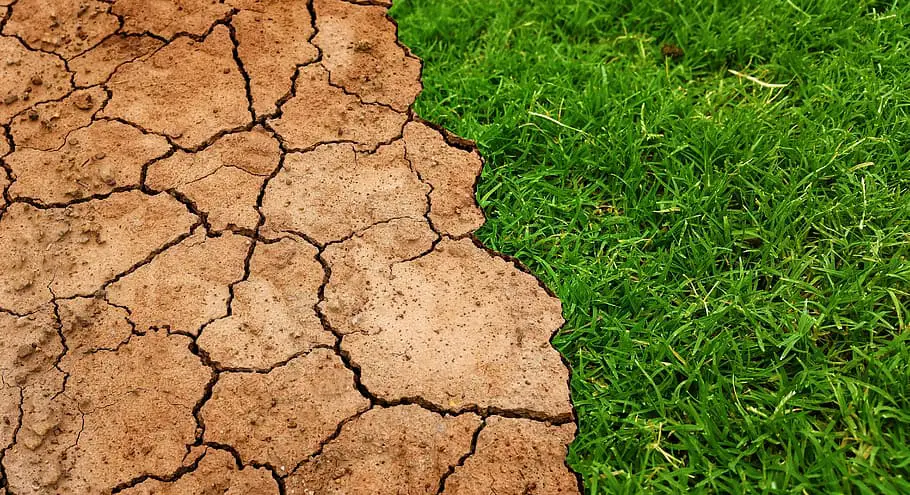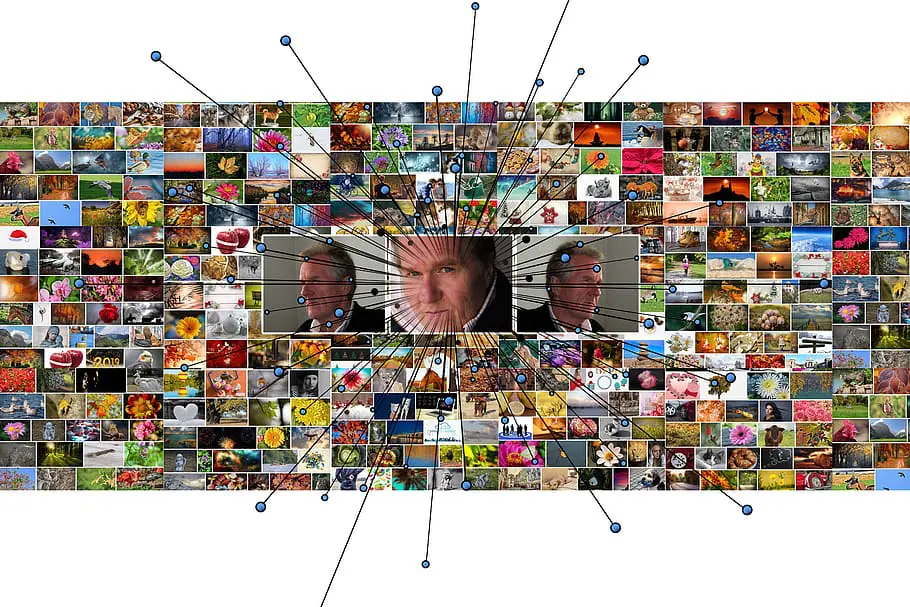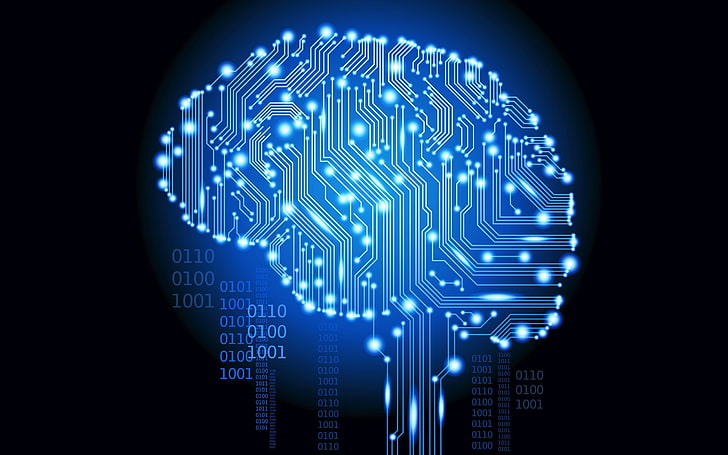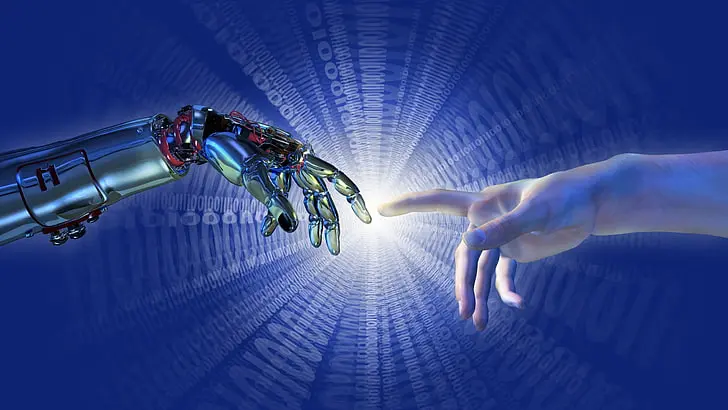
Explore how the use of AI in predicting climate change is revolutionizing climate change predictions. Dive into techniques, case studies, and future prospects.
Ever wondered about the use of AI in predicting climate change? Well, you’re in the right place!
As our planet faces increasing environmental challenges, artificial intelligence is stepping up in a big way.
From intricate machine learning models to deep learning predictions, AI is becoming a game-changer in forecasting climate trends.
So, let’s dive in and explore how this tech marvel is helping us understand our world better and shaping our responses to climate change.
The Use of AI in Predicting Climate Change
Welcome to our deep dive into the use of AI in predicting climate change.
We’re about to embark on a fascinating journey, exploring how artificial intelligence is not just a buzzword in the tech world, but a powerful tool in our fight against climate change.
We’ll be uncovering the role of AI, delving into specific techniques, examining real-world case studies, and even tackling the challenges this technology faces.
And we’ll also be looking ahead at the future of AI in climate prediction. So, sit back, relax, and let’s get started on this enlightening journey together!
The Role of AI in Combating Climate Change
Isn’t it amazing how far technology has come? Artificial Intelligence, once a concept confined to science fiction, is now playing a crucial role in combating climate change.
AI, with its ability to analyze vast amounts of data and identify patterns, is helping us understand the complexities of our environment like never before.
Think about it this way, our planet is a bit like a giant jigsaw puzzle, with each piece representing a different environmental factor.
AI is like a friend who helps us put the pieces together faster and more accurately.
It’s being used to optimize renewable energy sources, monitor deforestation, and even predict natural disasters.
By doing so, AI is not just helping us understand the impact of climate change, but also equipping us with the tools to fight it.
The Potential of AI in Predicting Climate Change
Now, let’s talk about the potential of AI in predicting climate change. Imagine having a crystal ball that could show us the future of our planet. Well, AI is the closest thing we have to that.
AI’s ability to process and learn from vast amounts of data means it can make predictions about future climate patterns with a level of detail and accuracy that was previously unimaginable.
It’s like having a super-powered weather forecast, but instead of telling us whether to carry an umbrella tomorrow, it’s helping us prepare for the long-term impacts of climate change.
From predicting sea-level rises to forecasting changes in global temperatures, AI is providing us with valuable insights that can inform policy decisions and mitigation strategies.
The potential is enormous, and we’re only just scratching the surface. As AI technology continues to evolve, who knows what other climate secrets it might unlock?
So, as we journey through this post, let’s explore how AI is not just reacting to climate change, but predicting and preparing us for it.
AI Techniques Used in Climate Change Prediction
Now that we’ve explored the role and potential of AI in predicting climate change, let’s delve into the specific techniques that make all this possible.
From machine learning models that can digest and learn from vast amounts of data to deep learning systems that can mimic the human brain and identify complex patterns, AI is truly revolutionizing the way we approach climate change prediction.
Let’s take a closer look at these fascinating AI techniques and how they’re being used in the fight against climate change.
Machine Learning for Climate Change Models
Let’s kick things off with Machine Learning, or as I like to call it, the ‘whiz kid’ of AI.
Machine Learning is all about teaching computers to learn from data and make decisions or predictions based on it.
But how does this apply to climate change models, you ask?
Well, climate change models are all about predicting the future state of the climate based on various factors like greenhouse gas concentrations, solar radiation, and even volcanic activity.
These models are incredibly complex and require processing vast amounts of data. That’s where Machine Learning comes in.
Machine Learning algorithms can analyze these large datasets, identify patterns, and learn from them.
This means they can improve their predictions over time, making them more accurate and reliable.
It’s like having a climate scientist that never sleeps, constantly learning and improving.
This makes Machine Learning an invaluable tool in creating more accurate and detailed climate change models.
Deep Learning for Climate Change Prediction
Now, let’s turn our attention to Deep Learning. Think of Deep Learning as the ‘brainy sibling’ of Machine Learning.
It’s a subset of Machine Learning that’s designed to mimic the way our brains work, allowing it to recognize patterns in data that are too complex for other algorithms.
In the context of climate change prediction, Deep Learning can be a game-changer.
It can process even larger datasets, including images and high-dimensional data, making it perfect for analyzing satellite imagery or complex climate simulations.
For example, Deep Learning can be used to analyze images of the Earth’s surface taken by satellites, identifying changes in vegetation, ice cover, and even atmospheric composition.
These insights can then be used to predict how these factors will change in the future, giving us a clearer picture of what to expect from our changing climate.
So, whether it’s Machine Learning’s ability to learn from data or Deep Learning’s capacity to handle complex patterns, AI techniques are playing a crucial role in predicting climate change.
And the best part? They’re only getting better with time!
Case Studies of AI in Climate Change Prediction
Alright, we’ve talked about the techniques, but how about seeing them in action?
It’s time to bring those AI concepts to life with some real-world examples.
In this section, we’ll explore case studies that showcase how AI is being used in climate change prediction.
From the research labs of Johns Hopkins University to the strategic insights of the Boston Consulting Group, we’ll see how these organizations are leveraging AI to make a difference in the fight against climate change.
So, let’s roll up our sleeves and dive into these inspiring stories of AI in action!
AI in Climate Change Research at Johns Hopkins University
First up, let’s take a trip to the esteemed Johns Hopkins University. Here, AI isn’t just a buzzword; it’s a powerful tool that’s being harnessed to tackle the pressing issue of climate change.
Under the guidance of Jim Bellingham, a pioneer in autonomous underwater robotics systems, the university is using AI to analyze vast climate data sets.
These data sets, which would take a significant amount of time to analyze manually, are being processed by AI to make more informed predictions about environmental changes.
This allows for earlier deployment of mitigation efforts, a crucial factor in combating climate change.
But it doesn’t stop there. The university is also exploring the use of AI-powered robots to fill in observation gaps in challenging environments like the Arctic Basin.
These robots can operate autonomously for up to six months, collecting valuable data that can help us understand how climate change is impacting our oceans.
AI for Climate Change at Boston Consulting Group
Next, let’s look at how the Boston Consulting Group (BCG) is leveraging AI for climate change. BCG is a global management consulting firm, and they’re using AI to help transition from a carbon-based economy to a net carbon-zero economy.
One of the ways they’re doing this is by using AI to assist in the design and creation of materials for larger windmills.
These windmills need to be exceptionally light, extraordinarily strong, and able to sustain extreme weather conditions.
AI is helping to meet these requirements, thereby aiding in the development of more efficient renewable energy sources.
BCG is also exploring how AI can contribute to other trends such as the electrification of transportation, transformations in agriculture, and smart electrical grids.
By doing so, they’re demonstrating how AI can be a powerful enabler for more energy-efficient and cost-saving solutions.
So, whether it’s in the research labs of a university or the strategic planning rooms of a consulting firm, AI is making a significant impact in the fight against climate change.
Challenges and Limitations of AI in Climate Change Prediction
Now, as much as we’d love to say that AI is the magic bullet for all our climate change woes, it’s important to remember that like all technologies, it has its challenges and limitations.
In this section, we’re going to take off our rose-colored glasses and take a hard look at the hurdles we face in using AI for climate change prediction.
From data requirements and quality to issues of model interpretability and transparency, we’ll delve into the nitty-gritty of what makes this a complex field.
But don’t worry, it’s not all doom and gloom. Understanding these challenges is the first step toward overcoming them.
So, let’s dive in and explore the other side of the AI coin.
Data Requirements and Quality
Let’s start with data requirements and quality.
You see, AI, especially Machine Learning and Deep Learning, is a bit like a gourmet chef that needs the right ingredients in the right quantities to create a masterpiece.
In this case, the ingredients are data.
AI models require vast amounts of high-quality data to learn from. The more data they have, the better they can identify patterns and make accurate predictions.
However, collecting this data, especially when it comes to climate change, can be a significant challenge.
For instance, to accurately predict how climate change will impact our oceans, we need comprehensive data from all parts of the ocean, throughout all seasons.
Gathering this data is not only time-consuming and expensive but also logistically challenging.
Moreover, the quality of the data is equally important. Inaccurate or incomplete data can lead to incorrect predictions, which in the context of climate change, can have serious implications.
Model Interpretability and Transparency
Next up are model interpretability and transparency. AI models, particularly those based on Deep Learning, are often referred to as ‘black boxes’.
This is because while they can make incredibly accurate predictions, understanding how they arrived at these predictions can be difficult, even for experts.
This lack of transparency can be a significant hurdle in the context of climate change prediction.
Policymakers and stakeholders need to understand how the model works and how reliable its predictions are before they can use it to inform their decisions.
Moreover, the complexity of these models can also make them difficult to interpret.
This can lead to misunderstandings or misinterpretations of the model’s predictions, which again, can have serious consequences in the context of climate change.
So, while AI holds immense potential in predicting climate change, it’s important to acknowledge and address these challenges.
Only then can we fully leverage the power of AI in our fight against climate change.
Future Prospects of AI in Climate Change Prediction
Having navigated the challenges, it’s time to look ahead and explore the exciting future prospects of AI in climate change prediction.
As we stand on the brink of a new era where technology and the environment intersect, the potential for AI to revolutionize our approach to climate change is immense.
From advancements in AI techniques to collaborative efforts in research, the future is brimming with possibilities.
So, let’s step into the world of tomorrow and discover what the future of AI in climate change prediction might hold.
Advancements in AI Techniques
First, let’s talk about advancements in AI techniques. As we’ve seen, AI is already doing some pretty amazing things in the realm of climate change prediction.
But as the technology evolves, we can expect even more impressive feats.
One area where we’re likely to see significant advancements is in the development of more sophisticated AI models.
These models will be capable of processing even larger and more complex datasets, leading to more accurate and detailed predictions.
Moreover, as AI techniques become more advanced, they’re likely to become more accessible too.
This means that more researchers, organizations, and even individuals will be able to use AI to contribute to our understanding of climate change.
Collaborative Efforts in AI and Climate Change Research
Next, let’s consider the power of collaboration. Climate change is a global problem, and it requires a global solution.
That’s why collaborative efforts in AI and climate change research are so important.
Around the world, researchers are coming together to share data, resources, and ideas.
This collaborative approach is accelerating the pace of discovery and innovation in the field of AI and climate change prediction.
For instance, initiatives like the Global Partnership on AI are fostering international cooperation in AI research, with a focus on addressing climate change.
Through these collaborations, we’re not only able to leverage the power of AI but also the collective intelligence and creativity of researchers worldwide.
So, as we look to the future, it’s clear that AI will continue to play a crucial role in predicting climate change.
And with ongoing advancements in AI techniques and increased collaboration among researchers, that role is only set to grow.
The Use Of AI In Predicting Climate Change FAQ
Got questions? We’ve got answers! In this section, we’ll tackle some of the most frequently asked questions about the use of AI in predicting climate change.
From the potential of AI in solving climate change to its impact on carbon footprint, we’ve got you covered.
So, let’s dive into these FAQs and clear up some common queries and misconceptions!
Q: Can we use AI to solve climate change?
A: While AI alone can’t solve climate change, it’s a powerful tool that can significantly aid our efforts.
AI can help us understand and predict climate patterns, optimize renewable energy sources, and even develop new materials for green technologies.
So, while it’s not a silver bullet, AI is definitely a key player in our fight against climate change.
Q: Why is AI a game changer for climate action?
A: AI is a game changer for climate action because of its ability to process and learn from vast amounts of data.
This allows it to make accurate predictions about future climate patterns, which can inform policy decisions and mitigation strategies.
Moreover, AI can also help optimize energy use, reduce emissions, and develop new green technologies.
Q: Does AI increase carbon footprint?
A: AI does require significant computational power, which can lead to increased energy use and potentially a larger carbon footprint.
However, it’s important to note that the field of AI is also making strides in becoming more energy-efficient.
Moreover, the potential of AI to help reduce global carbon emissions through optimization and innovation in various sectors could outweigh its own carbon footprint.
Q: What are the pros and cons of AI?
A: On the pro side, AI can analyze large datasets, identify patterns, make predictions, and learn over time, making it a powerful tool in many fields, including climate change prediction.
It can also automate and optimize various processes, leading to efficiency gains.
On the con side, AI models can be complex and difficult to interpret, leading to issues with transparency and trust.
AI also requires large amounts of high-quality data and significant computational power, which can be resource-intensive.
Lastly, like any technology, AI can be misused if it falls into the wrong hands or is used without proper understanding or oversight.
The Use Of AI In Predicting Climate Change Conclusion
Well, we’ve certainly covered a lot of ground, from exploring the role of AI in predicting climate change to delving into specific techniques, case studies, and even the challenges this technology faces.
But as we reach the end of our journey, it’s time to tie it all together.
In this concluding section, we’ll recap the importance and potential of AI in predicting climate change and reflect on the insights we’ve gathered.
So, let’s take a moment to look back at what we’ve learned and look ahead to the exciting possibilities that lie before us.
Recap of the Importance and Potential of AI in Predicting Climate Change
As we wrap up, let’s take a moment to reflect on the importance and potential of AI in predicting climate change.
We’ve seen how AI, with its ability to analyze vast amounts of data and identify patterns, is playing a crucial role in our understanding of climate change.
It’s helping us predict future climate patterns with a level of detail and accuracy that was previously unimaginable.
This is not just fascinating from a scientific perspective, but also incredibly important for policymakers, planners, and all of us as inhabitants of this planet.
But the potential of AI in this field is even more exciting.
As AI techniques continue to advance and become more sophisticated, we can expect even more accurate and detailed climate predictions.
Moreover, as more researchers and organizations around the world start to leverage AI, we’ll see a greater diversity of applications and innovations.
So, while we’ve come a long way in using AI to predict climate change, it’s clear that we’re only at the beginning of this journey.
The road ahead is filled with exciting possibilities, and we can’t wait to see where it leads.
As we continue to harness the power of AI, we’re not just predicting the future of our climate, we’re also shaping it.







